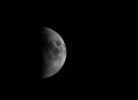
 |
ephemeris.com |
| NASA/JPL |
| Home | Ephemeris | Solar System | History | Space & Time | Software | Books | Links | Feedback |
| ephemeris - Latin, originally from the Greek "ephémeros, -on," daily. An almanac of the daily motions of the planets and stars. |
| ephemeris.com - A website devoted to information about time and motion in the universe. |
|
The Celtic Calendar. The Celts lived over much of northern Europe. Most of what we know about them comes from observations of Roman and Greek chroniclers. In the past century, we have also been fortunate to find well-preserved burial sites and even a calendar from Gaul. The Celtic day began at sundown. Time was counted in nights, not days. The English word "fortnight" (fourteen days, half a lunar month) survives as a reminder of this earlier time. A week wss called a sennight, meaning seven nights. Months were counted as a number of moons. Celts celebrated the beginning of each of the four agricultural seasons: Samhain (winter), Imbolc (spring), Beltain (summer), and Lugnasa (autumn). They also had festivals for the solstices and equinoxes. The first Full Moon after the Spring Equinox was celebrated as Oester, the festival of the Spring Goddess, who was represented as a hare to symbolize mating, and as an egg to symbolize the start of a new life. This evolved into Easter, with eggs left by the Easter Bunny, although Easter occurs one week later than the original Oester.Celts believed that the world was originally completely dark in the cold of winter, and that light followed the darkness. They thus began their New Year on November 1, with the festival of Samhain (pronounced sow-wen) on October 31. During the transitioin from the old year to the new, little was thought to separate the world of the living from the world of the dead. This festival is preserved today as the custom of Halloween. The season of Imbolc is the start of renewed life. In Celtic, Imbolc means "lactation of the ewes." This has become the Christian festival of Candlemass on February 2. Beltain marks the beginning of summer, represented by by the blossoms of springtime and courting between men and women. Animals were led over bonfires at this time to rid them of evil spirits. Household fires were relit from these bonfires. In Scotland, stones with holes in the center still exist that couples would pass through at this time as a fertility rite. Lugnasa marks the harvest and the beginning of autumn. While the other three season festivals only last a day, Lugnasa was celebrated for an entire moon. The festival ended with the Harvest Home, when the last crops were gathered. Harvest Home represented capturing the Goddess of the Earth. This survives today with the making of a corn dolly, which represents the Goddess of Grain. The corn dolly was planted in the first furrow dug in the Spring. The times of the Celtic Solar Year were Alban Elued (Autumnal Equinox), Alban Arthuan (Winter Solstice), Alban Eiler (Spring or Vernal Equinox), and Alban Heruin (Summer Solstice). |
| Home | Ephemeris | Solar System | History | Space & Time | Software | Books | Links | Feedback |
We're adding to this site constantly. If you have any comments or suggestions, please send email to mystars@ephemeris.com.
Copyright 2003-2004. All Rights Reserved.